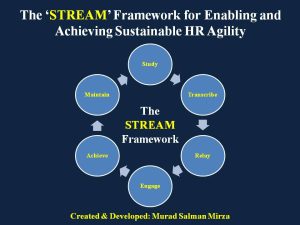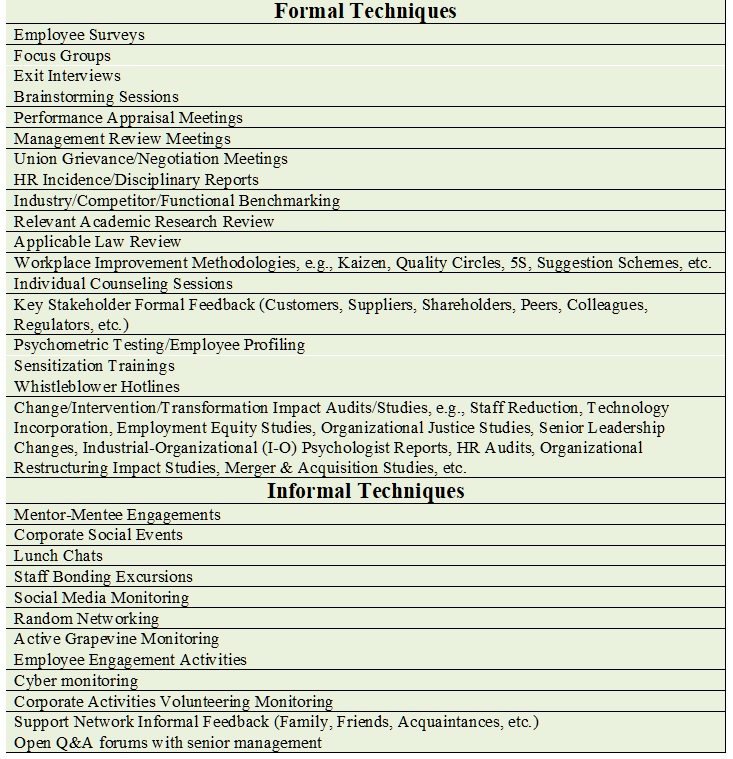The HR function has habitually been criticized for being sluggish and pedantic in terms of its role within an organization. Frustrations abound among disgruntled/dissatisfied employees who see the HR function as the enforcer of leadership mandates while being unable, incapable or hapless in alleviating their concerns.
The internal discontent is routinely amplified through the grapevine and even positive steps from management are viewed with suspicion. Examples are offered up in casual conversations about the capabilities of HR functions of other organizations in placating all the key stakeholders and galvanizing initiatives for organizational excellence. Such “grass is greener on the other side” mindset often erodes morale within the organization and deflates its competitive strengths which can have serious consequences in trying to keep up with the brutal pace of the digital world.
Consequently, it is becoming increasingly critical for the leadership of progressive organizations to facilitate the HR function in responding more quickly and effectively to changing employee expectations, workplace disruptions and business requirements in order to stay on par or get ahead of competitors.
The case for HR agility is further reinforced by the following factors:
Brokering and discovering unknown talent — This reflects the need for skill maximization within the current workforce, which requires keen exploration and active encouragement to help workers discover/display their capabilities on a wider bandwidth.
Building an adaptive and ethical culture — This reflects the entrenchment of core values within the multigenerational workforce as the primary source of employee engagement and value-driven initiatives for a more cohesive workplace.
Developing a learning organization — This reflects the enhancement of capabilities that robustly infuse skills and expertise within the organizational fabric while laying a strong foundation for consistently enriching the knowledge bank.
Fostering worker mobility — This reflects the career optimization for ambitious employees who are committed to expanding their skills and accommodate change with a positive frame of mind by proactively adapting to disruptive influ ences, e.g., proactively aligning their career paths with the inclusion of AI-enabled entities in the workplace.
ences, e.g., proactively aligning their career paths with the inclusion of AI-enabled entities in the workplace.
Applying science and fact-based analytics — This reflects the refinement of decision-making that comes from adopting a scientific approach coupled with fact-based analytics for taking calculated risks and minimizing the chance of erroneous judgments prone to grave consequences.
Consequently, the following STREAM framework is being presented that can be used to illuminate the path for enabling and achieving sustainable HR agility:
S: Study phase — This refers to the deployment of suitable formal and informal means for correctly assessing the issues. For example:

It entails careful collection of authentic data and its meaningful conversion/compilation into viable information that can facilitate thorough analysis for astute decision-making.
T: Transcribe phase — This refers to the prioritization of the highlighted issues and associated findings that have come out of the Study phase. It entails the formulation of desired goals and objectives coupled with the structuring of relevant information into a formal, but clear report for all the key stakeholders to facilitate review and discussion.
R: Relay phase — This refers to the communication of the formal report developed during the Transcribe phase to all the key stakeholders. It entails distribution in an open, transparent and constructive manner with an invitation for questions so as to create robust buy-in and develop consensus for desired goals and objectives.
E: Engage phase — This refers to the channelization, optimization and utilization of the required resources to launch appropriate measures/action plans stemming from the goals and objectives that have been presented during the Relay phase. It entails prudent operational planning with appropriate risk assessment and mitigation measures for gauging the efficacy of available options, selection of a suitable team under capable leadership (if needed), defining key milestones or performance indicators, close collaboration with all the relevant stakeholders and associated monitoring mechanisms.
A: Achieve phase — This refers to assuring, ensuring and confirming the attainment of results. It entails timely monitoring of key milestones and performance indicators and taking appropriate corrective or preventive actions to prevent deviation from the desired course of action.
M: Maintain phase — This refers to systemizing, sustaining and refining the whole process with key lessons from the previous phases. It entails an honest self-reflection and a comprehensive review that engenders a solid commitment to consistently improving the “client experience” of other functions within the HR function. It also includes the timely enrichment of the knowledge bank that is openly accessible to all team members.
Some of the key drivers of the STREAM framework are:
Robust & unwavering leadership support
Multichannel & clear communication
Collaboration & cooperation
Proactive & meaningful initiatives
Constructive & insightful feedback
Efficient & effective resolution
Consistent & prudent monitoring
Timely & honest reviews
Healthy appetite for fruitful improvement
Innovative mindset for nimbleness, e.g., HR SWAT teams
Parting insights
HR agility is an empowerment manifestation that reflects the confidence of the corporate leadership in the ability of HR to rise above the noise of conventionalism and become a recognized strategic partner in organizational success. It does not happen in a vacuum and needs HR professionals to already be functioning at a high level of wellbeing and mindfulness as it doesn’t make sense to attach agility expectations to a function that is itself in need of a savior.
The digital world is very demanding and moves at a brisk pace while routinely leaving behind slacking business concerns that fail to capitalize on HR agility as a catalyst for transformative success. How agile is your HR?
